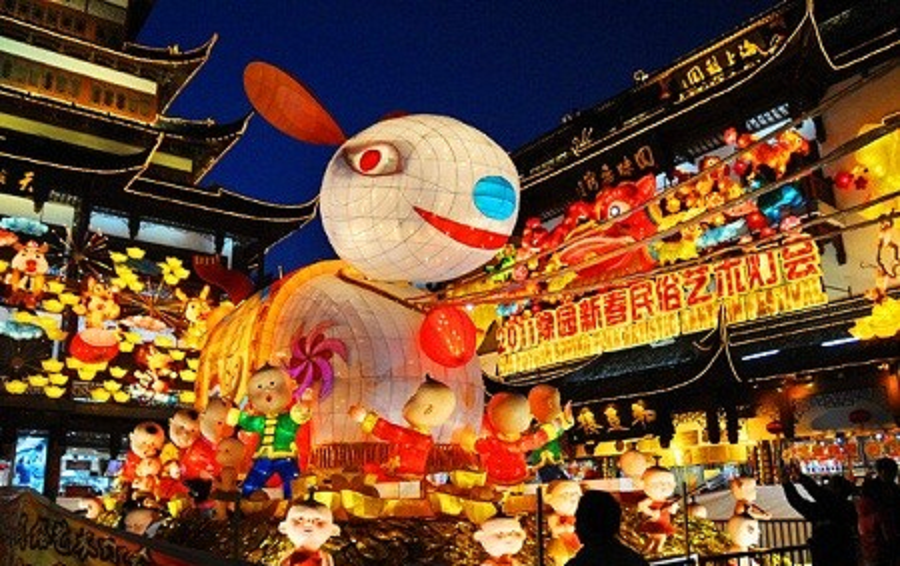
China
The Mid-Autumn Festival in China takes place on the 15th day of the 8th lunar month every year and is considered the second biggest holiday after the Chinese New Year. This is an occasion for families to reunite, watch the moon together, enjoy moon cakes and participate in many community activities. Activities such as lion dances, dragon dances, floating lanterns and solving riddles are held in many places. These activities not only create a joyful atmosphere but also help preserve the long-standing folk cultural traditions of the Chinese people.
The traditional dish that is indispensable during the Mid-Autumn Festival in China is mooncakes. The round shape of the cake symbolizes completeness and perfection. Chinese mooncakes are quite similar to Vietnamese ones with a thin crust, lotus seeds, mung beans, salted eggs, etc. In each region of China, this traditional cake also has variations depending on taste.
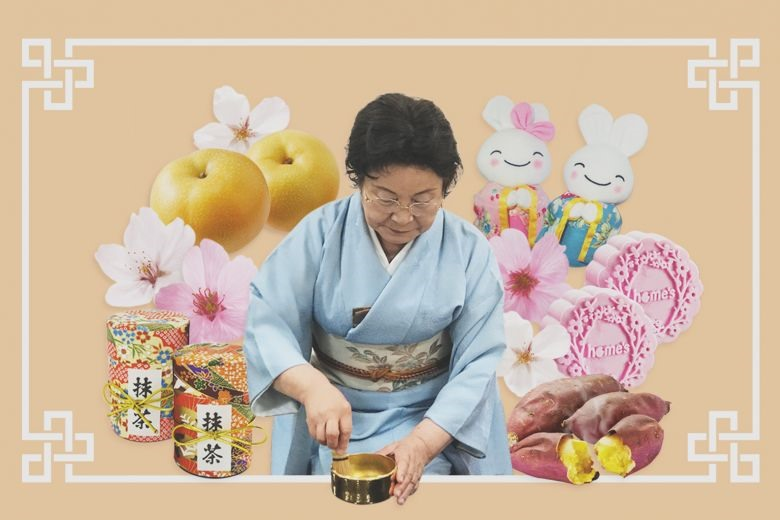
Japan
The Japanese Mid-Autumn Festival is also known as Tsukimi - Moon Viewing Festival. On this occasion, Japanese people often display white tsukimi-dango rice cakes, pampas grass and harvested crops to give thanks for the harvest.
The legend of the jade rabbit on the moon is a familiar story associated with Tsukimi, reflecting the belief in nature and the subtlety of Japanese spiritual life.
Tsukimi is a festival often held at temples, in families and at famous moon-viewing spots. This is a moment for people to find peace of mind and at the same time give thanks to nature for the bountiful harvest.
During the Mid-Autumn Festival, Japanese children are often given carp lanterns by their parents to participate in lantern parades. Carp lanterns in Japan symbolize courage.
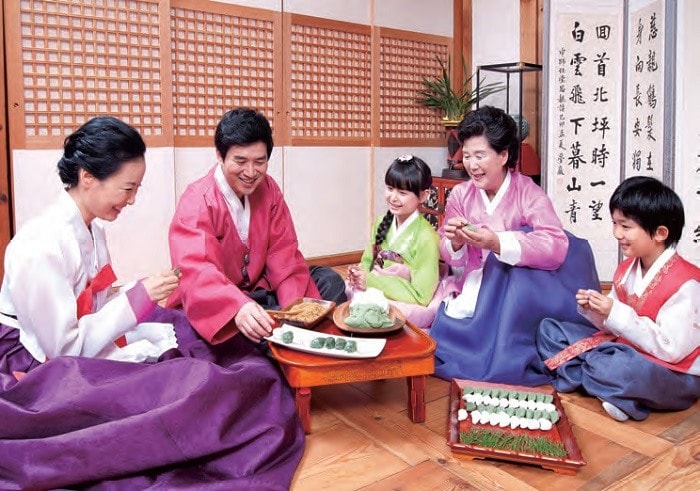
Korea
Chuseok, one of the biggest holidays of the year in Korea, falls on the same day as the Mid-Autumn Festival. This is the time when people return to their hometowns, reunite with their families, set up offerings to their ancestors (Charye) and clean graves (Seongmyo), showing filial piety and solidarity between generations in the family and community.
During this occasion, the typical Korean dish is songpyeon - a type of sticky rice cake filled with sesame, beans, and chestnuts, handmade and passed down from generation to generation.
Korean children and adults wear Hanbok and participate in many recreational activities such as: mock battles, archery competitions, wrestling, singing and dancing... Koreans often dress up as cows or turtles, with a musical troupe following behind, not lion or dragon dances.
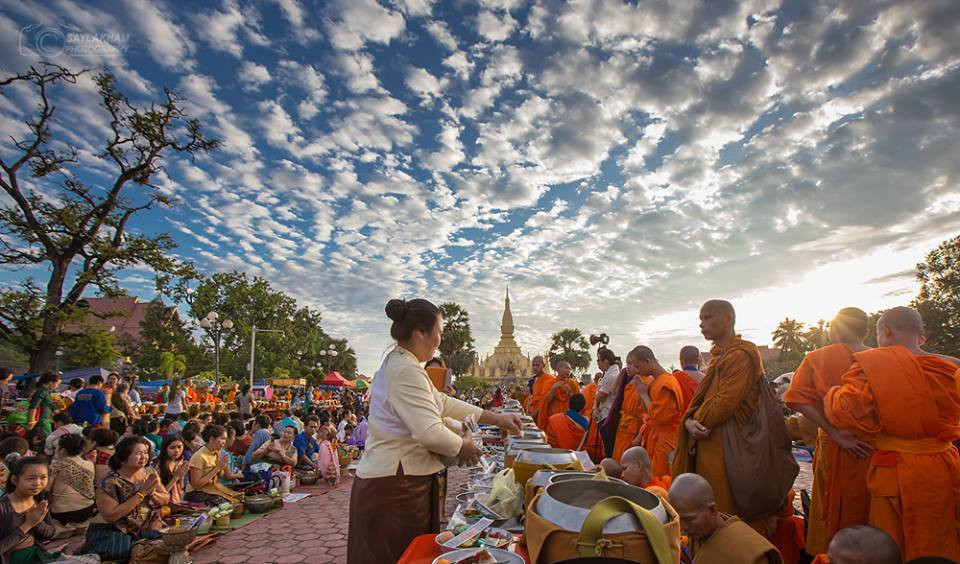
Laos
In Laos, this New Year's Day is called "Nguyet phuc tiet" - the festival of the blessed moon.
Lao people consider the full moon of August to be a time associated with spiritual activities. They gather to watch the moon, join in singing and dancing and send wishes for good crops and a peaceful life. Activities often take place in a communal atmosphere, demonstrating the bond between people and nature. Although not too elaborate, the Mid-Autumn Festival in Laos still plays an important role in the spiritual and cultural life of the people.
In addition, Lao people also have a very big festival related to the full moon day. That is the Boun Thatluang Festival, which takes place at Thatluang - a large and beautiful pagoda, on the full moon week of the 11th lunar month (12th Buddhist month). This is the biggest Buddhist cultural festival of the year in Laos. The ceremony includes praying for peace and blessings for 3 days. The festival will last up to 1 week, mainly with entertainment activities in many forms.
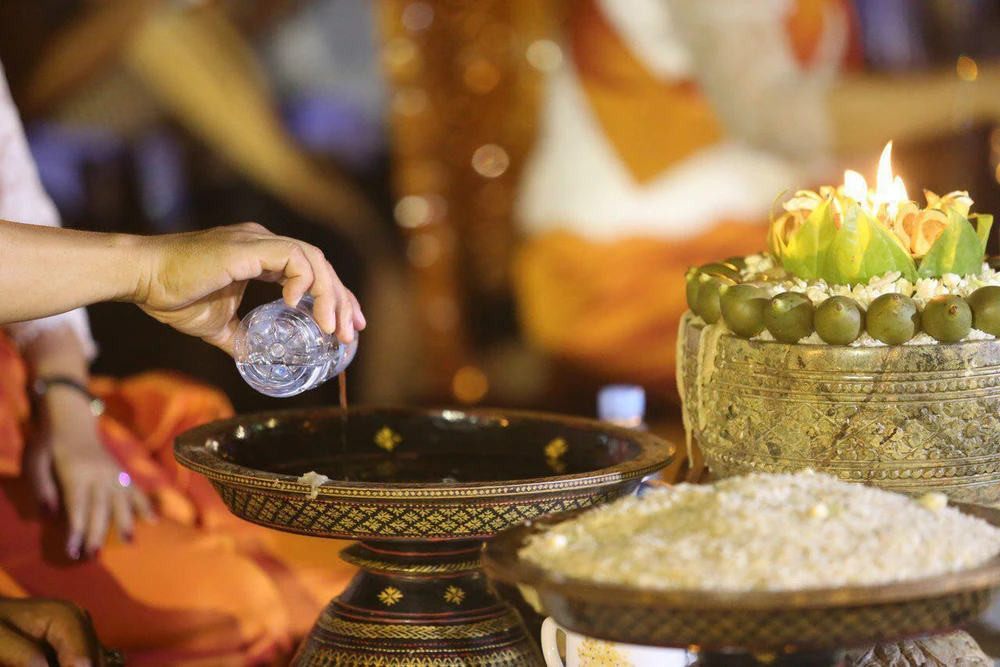
Cambodia
The Mid-Autumn Festival in Cambodia takes place much later than in other countries. That is the Ok Om Bok festival, also known as the moon worshiping festival, which takes place on the full moon day of the tenth lunar month. The festival originates from the Khmer belief that the moon is the god who controls the weather.
Ok Om Bok Festival is an occasion to thank the gods for bringing favorable weather and rain, helping crops grow well; at the same time, pray for a bountiful harvest in the next season, a more prosperous and fulfilling life.
The main ritual of the moon worshiping ceremony usually takes place at the temple. The offerings to the moon include fresh flowers, cassava soup, flat rice, and sugarcane juice. After worshiping the moon, people will take flat rice and stuff it into the mouths of children. Because Cambodians believe that doing so will pray for children to have plenty to eat and drink and have a prosperous and fulfilling life in the future.
On this occasion, people also release water lanterns, sky lanterns, organize boat races and many other folk cultural activities.
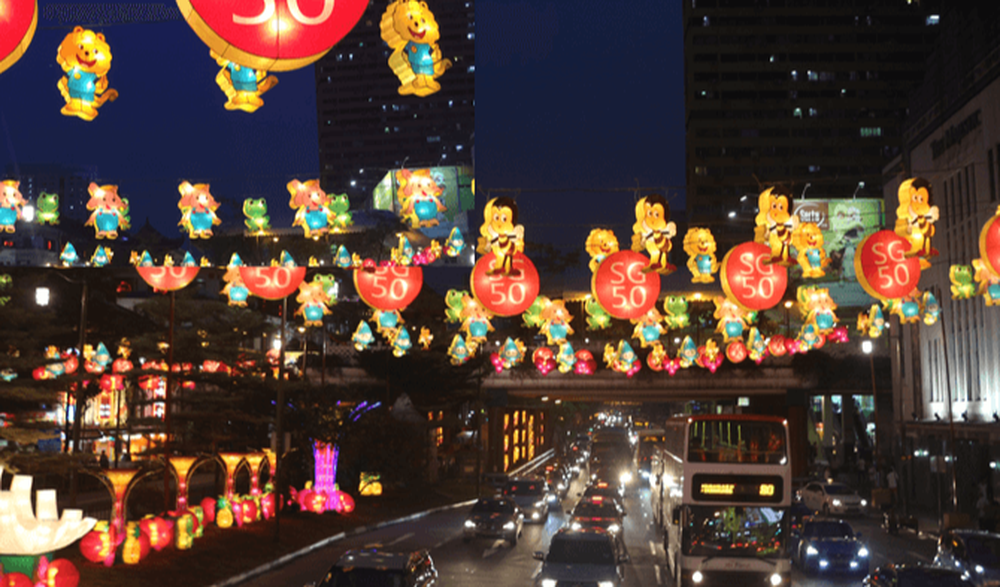
Singapore
In Singapore, Mid-Autumn Festival is celebrated with great fanfare, especially among the Chinese community. Neighborhoods are decorated with lanterns, parades, performances and a variety of mooncakes are sold.
Children eagerly carry lanterns, adults drink tea, chat and enjoy cakes together. The festival not only has cultural significance but also attracts international tourists, contributing to promoting the image of a multi-ethnic and traditional Singapore.
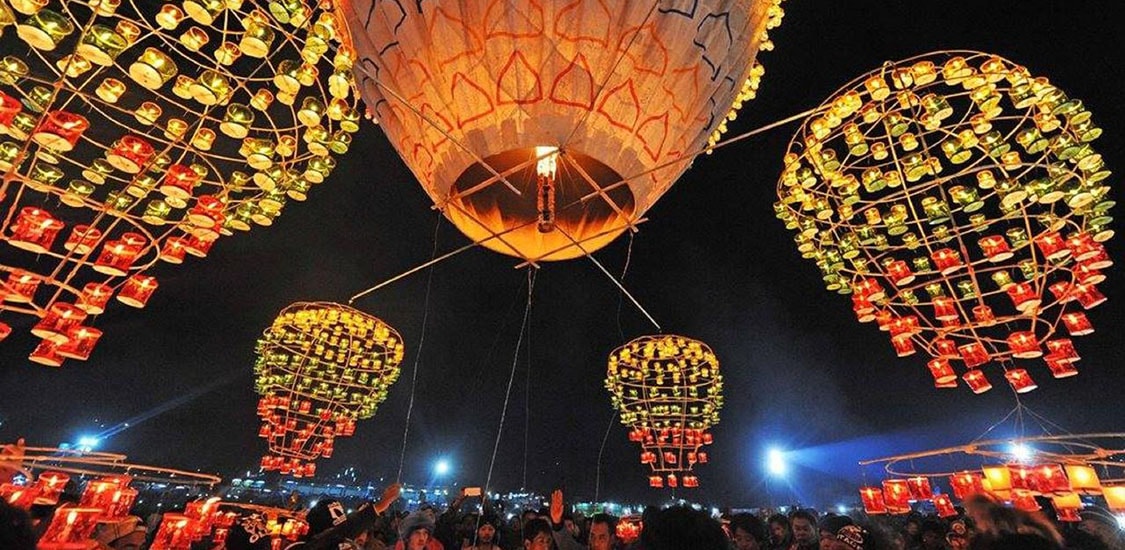
Myanmar
In Myanmar, the indigenous people have a special festival associated with the full moon day, the Thadingyut Festival of Lights. The festival takes place on the full moon day of the seventh lunar month according to the Buddhist calendar (usually around October). The festival is considered one of the most important cultural and religious events in this country. This is an occasion for people to remember Buddha, show respect to parents and teachers and pray for a peaceful life.
During the festival, from temples to streets, every house is lit up. Tens of thousands of candles, lanterns and torches will burn throughout the night, creating a splendid and sacred scene.
The festival not only has spiritual significance, but is also an occasion to unite the community, demonstrating the spirit of solidarity and filial piety tradition of the Myanmar people.
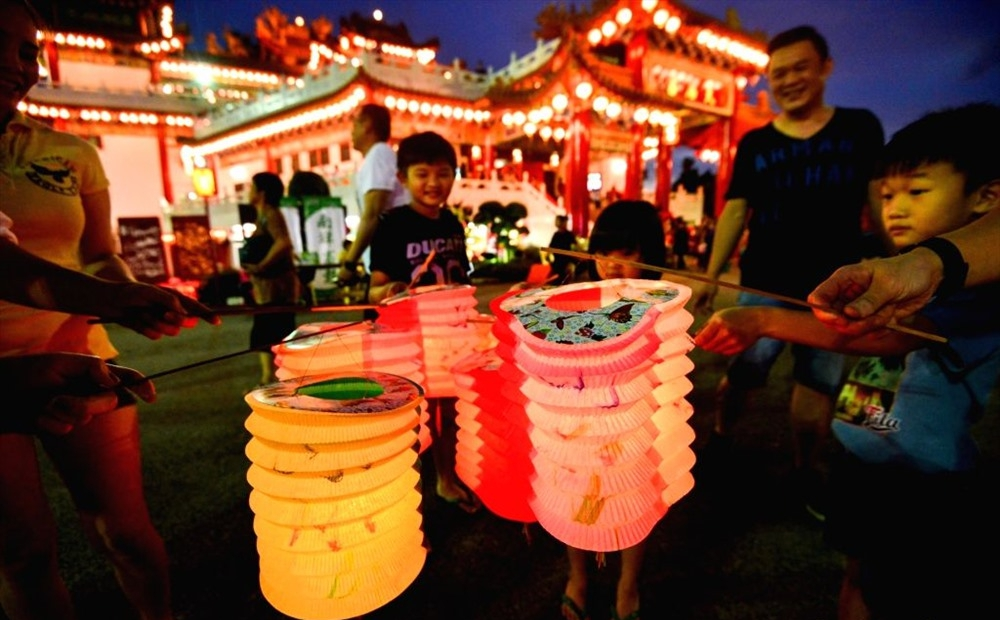
Malaysia
Malaysians often make moon cakes on the 15th day of the 8th lunar month and light lanterns to celebrate the Mid-Autumn Festival.
Mooncakes in Malaysia are not only round or square in shape but also have molds shaped like seashells, flowers, stars… and especially the cakes come in many colors. In addition, there are cold mooncakes or also known as snow mooncakes, with cold fillings and crusts that bring a completely different feeling to the enjoyer.
During the Mid-Autumn Festival, lantern festivals and art shows are held in many big cities, creating a vibrant atmosphere.
Although the Mid-Autumn Festival is different in each country, the core meaning is still towards family, ancestors and nature. Maintaining and promoting these customs not only preserves national identity, but also contributes to connecting communities in the integration era.
PV (synthesis)Source: https://baohaiphong.vn/doc-dao-tet-trung-thu-o-mot-so-nuoc-chau-a-522230.html


![[Photo] The 1st Congress of Phu Tho Provincial Party Committee, term 2025-2030](https://vphoto.vietnam.vn/thumb/1200x675/vietnam/resource/IMAGE/2025/9/30/1507da06216649bba8a1ce6251816820)
![[Photo] Solemn opening of the 12th Military Party Congress for the 2025-2030 term](https://vphoto.vietnam.vn/thumb/1200x675/vietnam/resource/IMAGE/2025/9/30/2cd383b3130d41a1a4b5ace0d5eb989d)

![[Photo] Panorama of the cable-stayed bridge, the final bottleneck of the Ben Luc-Long Thanh expressway](https://vphoto.vietnam.vn/thumb/1200x675/vietnam/resource/IMAGE/2025/9/30/391fdf21025541d6b2f092e49a17243f)
![[Photo] General Secretary To Lam, Secretary of the Central Military Commission attends the 12th Party Congress of the Army](https://vphoto.vietnam.vn/thumb/1200x675/vietnam/resource/IMAGE/2025/9/30/9b63aaa37ddb472ead84e3870a8ae825)
![[Photo] President Luong Cuong receives President of the Cuban National Assembly Esteban Lazo Hernandez](https://vphoto.vietnam.vn/thumb/1200x675/vietnam/resource/IMAGE/2025/9/30/4d38932911c24f6ea1936252bd5427fa)


































































































Comment (0)